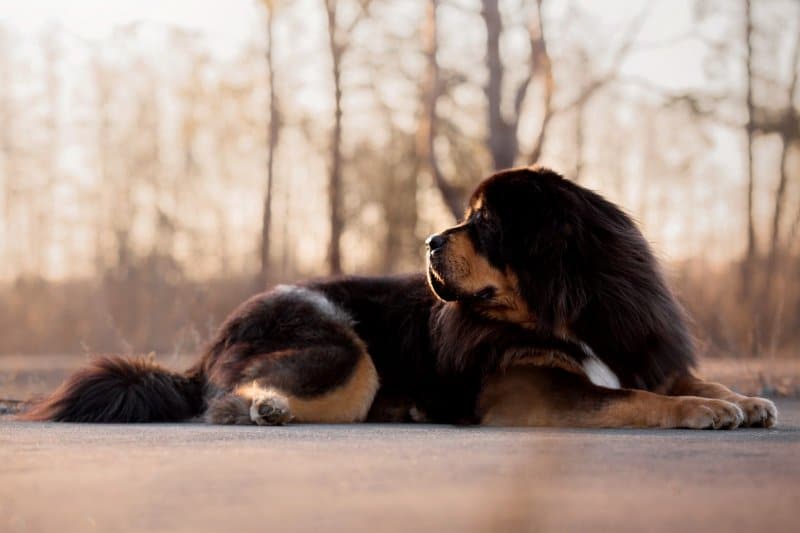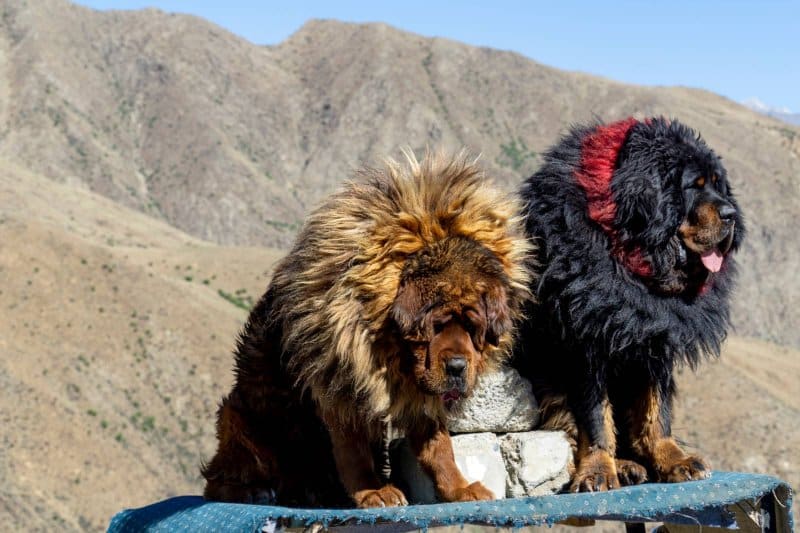As is well known, the Tibetan Mastiff, as an ancient domesticated breed of dog, finds its roots in the rugged Himalayan Mountains among the nomadic people who have lived there from time immemorial. At no time did this culture embrace, or practice, the more sedentary agricultural methods that would be, and are, familiar to the Western world. There are no boundaries, no claimed lands, no fences, no barns. There never were. Farming, and in particular, the breeding of livestock, is fundamentally different in the Himalayas. The claim that, historically, Tibetan Mastiff dogs were used as livestock guardian dogs must, therefore, mean something fundamentally different for the Tibetan Mastiff than it might be understood by those who raise livestock today in a modern, Western world. This much is inarguable.
Furthermore, even supposing that the Tibetan Mastiff functioned as a livestock guardian under any agricultural system would be a fact of no import now. Canines, all canines (including those still in the wild such as wolves and coyotes), have many traits in common. They all have a prey/chase drive. They all use their strong sense of smell to find things (not only prey, but one another, safe bedding areas, water, and so on). They all have a tendency to form packs and protect its members, which makes them excellent guardians of humans and property.
Enter selective breeding. Some breeders, decades, perhaps even centuries ago, valued some of these traits over others and selected for these traits. Those who valued the prey/chase drive bred for it, molded it, and perfected it to give us today’s herding breeds. Those who valued their superior sense of smell nurtured that trait, and the world now knows a number of very excellent hunting breeds. Still, it is not surprising to find the occasional Beagle that can herd sheep, or the occasional Poodle with an exceptional sense of smell. But it wouldn’t be the way to bet.
Similarly, there will be a handful of Tibetan Mastiffs that function as livestock guardians, but these traits have not been nurtured in the breed throughout its domesticated history. Therefore, it’s only a gamble as to whether any rudiment of those traits remain. It’s possible they’re there, but it’s probably not a good idea to bet the farm on it. Literally.
What DOES it mean to be a livestock guardian dog?
Simply because a dog has not killed its owner’s livestock doesn’t mean it’s a livestock guardian dog. Nearly any dog is capable of clearing that bar. Nor is it sufficient that a dog objects to intruders. Many, many dogs have that tendency. Even both of these abilities together do not qualify a dog as a livestock guardian.
When looking for livestock guardian breeds, seek the advice of experienced farmers who know about livestock predation. The vast majority of Tibetan Mastiff breeders cannot help you here.
The following is an alphabetical list of livestock guardian dogs that are better suited for the job:
Tibetan Mastiffs are a glorious breed of dog, spectacular in dozens of ways. Value them for those ways. Love them for those ways. But if you need a livestock guardian dog, look for a different breed.

Tibetan Mastiff Breed Magazine
Showsight Magazine is the only publication to offer dedicated Digital Breed Magazines for ALL recognized AKC Breeds.
Read and learn more about the Tibetan Mastiff dog breed with articles and information in our Tibetan Mastiff Breed Magazine.
Error embedding FlippingBook shortcode, please check the flipbook url. (https://digital.showsightmagazine.com/view/957454/)
If you enjoy the Tibetan Mastiff Breed Magazine, help us educate the community by sharing it.










